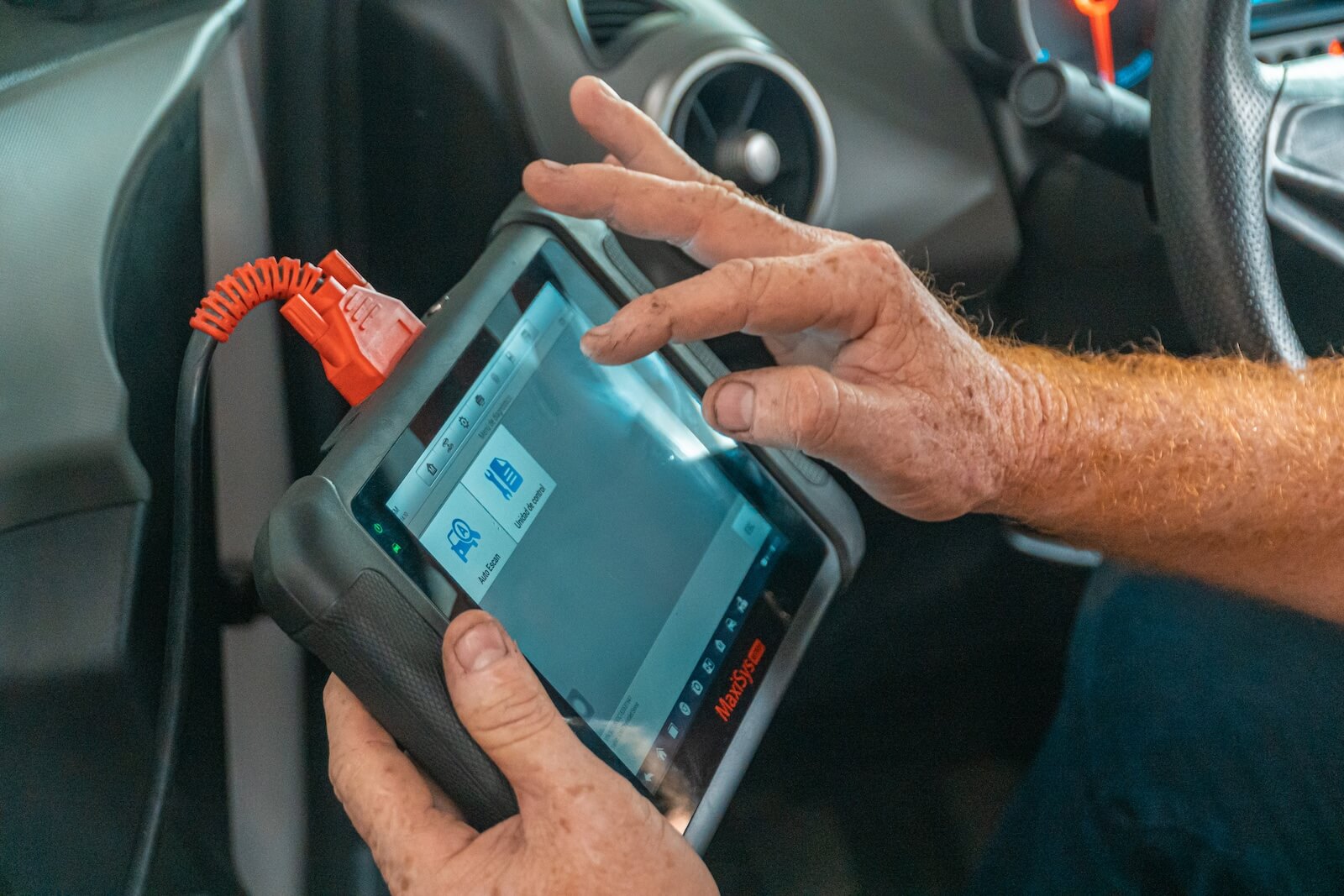Preventive maintenance for fleets is the best way to reduce – even avoid – vehicle breakdowns. Preventive maintenance is based on mileage, time, engine hours, or gallons of fuel used. When pre-defined thresholds are met, preventive maintenance plans trigger activities such as vehicle inspection, cleaning, testing, repairs, the replacement of parts, lubrication, and other ongoing vehicle maintenance activities.
When managing a fleet, vehicle availability is paramount. Preventive maintenance is useful for fleets, as performing maintenance tasks on a scheduled basis is preferable to pulling a vehicle from availability for unexpected breakdowns and repairs. Preventive maintenance can reduce long-term costs by extending the usable life of your vehicles, and additionally, it helps to ensure the safety of your vehicle operators on the road. Download our interactive Fleet Maintenance Planning Checklist now or continue reading for more details on how to implement a fleet preventive maintenance plan.
How to Implement a Fleet Preventive Maintenance Plan
1. What You Need to Implement a Fleet Preventive Maintenance Plan
You’ll need a few essential items for an effective fleet preventive maintenance plan, including:
- A checklist of all preventive maintenance activities to be performed during scheduled maintenance (this may differ for each class of vehicle)
- The service interval, or the frequency at which preventive maintenance will be performed on vehicles
- A process for drivers to submit written inspections
- A process for drivers to submit written complaints, such as when a vehicle breaks down or is exhibiting symptoms that could indicate a problem
- An automotive facility where inspections, maintenance, and repairs will take place
- A staff of automotive technicians qualified to perform inspections, maintenance activities, and repairs
- A record-keeping method, which consists either of written documentation or software
- A process for ordering parts and maintaining spare parts inventory
2. Establish a Baseline
Before implementing a PM program, you’ll need a clear picture of the current status of every vehicle in your fleet. That means a complete inspection with all available data documented, the maintenance history for the vehicle (if available), parts replaced, vendors, etc.
Every vehicle should have a current inspection and service record, as well as a baseline of current mileage, fluid levels, and any other available information.
3. Determine Maintenance Intervals
Determine how often preventive maintenance will be performed for each class of vehicle in your fleet. Maintenance schedules may be different for certain types of vehicles, and maintenance may be triggered by different factors depending on the type of vehicle. For instance, you might base preventive maintenance on mileage for standard gas-operated vehicles, but other vehicles, such as equipment used on-site, may have preventive maintenance triggered based on the number of engine hours. While there’s no real gold standard for the metrics that should be used to trigger preventive maintenance, you should decide on an interval and ensure that it’s consistently used across all fleet vehicles in a particular class.
Your preventive maintenance intervals may also depend on the operating conditions. For normal operating conditions, for instance, a standard interval may be used, but vehicles used in severe operating conditions may require more frequent preventive maintenance. Vehicles used by multiple drivers may have shorter intervals, as well as vehicles used in off-road conditions, vehicles used for towing, or vehicles subject to excessive idling, such as in inner-city congested traffic.
To successfully carry out preventive maintenance, you’ll need to determine the metrics to track for each vehicle, such as mileage, fuel usage, operating hours, or other metrics. Decide on the trigger that will prompt preventive maintenance activities, such as every 3,000 miles, every 1,000 operating hours, or another measurable data point.
4. Consider Fleet Maintenance Software
While you can manage fleet preventive maintenance manually, investing in a software solution can automate much of the oversight and management process for fleet maintenance. There are a variety of fleet maintenance software solutions available that will make your maintenance process much more efficient, and many of today’s software solutions are affordable for small fleets, as well.
Generating reports takes a fraction of the time when you rely on fleet maintenance software compared to manual methods – in most cases, you can generate reports in minutes rather than hours. Software also makes it simpler for your fleet operators to report on issues and submit required reports, such as basic inspections, after operating a vehicle. What’s more, automated data collection reduces the likelihood of human error, boosting overall accuracy and efficiency.
Look for useful features such as:
- Asset and vehicle tracking
- Cost tracking
- Licensing and registration tracking
- Purchase and work order tracking
- Client/operator request portal
- Insurance claims management
You should also consider mobile capabilities, integration with your existing fleet management tools, and cloud deployment (particularly for growing fleets that require a solution that scales). When comparing software solutions, look at the average fleet size managed with the software as well as the fleet size capacity the software is capable of handling.
Fleet maintenance software will allow you to set up alerts based on your pre-defined triggers, which will automatically notify your fleet manager or maintenance manager when a vehicle is due for preventive maintenance.
5. Develop a Preventive Maintenance Service Checklist
A service checklist should contain required inspections, other safety tasks, and preventive maintenance tasks, including:
- Changing engine oil and filters
- Transmission fluid
- Inspection of cooling and fuel systems
- Inspecting engine and transmission mounts
- Inspecting and changing (if necessary) drive shafts, CV joints, belts, and hoses
- General tune-ups
- Inspecting electrical system components
- Inspecting the brake system and replacing brake pads and rotors as needed
- Inspecting the steering and suspension system
- Inspecting tires, wheels, and rims
- Replacing tires in a timely fashion (including seasonal changes as appropriate)
- Inspecting the exhaust system
- Evaluating the condition of the undercarriage and frame
- Inspecting both interior and exterior lights
- Replacing the windshield wipers and filling windshield fluid
- Inspecting seat structures and seatbelts
- Checking for fluid leaks
- Addressing the auxiliary systems
Again, preventive maintenance activities may differ for each type or class of vehicle in your fleet. Some vehicles may require more robust inspections for compliance, while others may require more frequent parts or fluid replacement. Develop a checklist for each vehicle class and type in your fleet.
6. Develop Driver Inspection and Reporting Systems
Your vehicle operators are your first line of defense when it comes to fleet maintenance. Operators who use the vehicles regularly can often pick up on subtle signs and symptoms during operation that may not be obvious even to experienced automotive technicians during a routine inspection. Operators should be tasked with monitoring the following:
- Vehicle safety systems and parts, such as tires, windshield wipers, the braking system, horn, steering, etc.
- Vehicle operating behavior, such as rough idling, misfiring, screeching brakes, etc.
- Vehicle body and interior, such as mirrors, the exterior body, the condition of the seats, etc., including any damage to the glass, body, mirrors, or interior that occurs during use or is noticed upon taking control of the vehicle
- Miscellaneous items, such as the radio operation, heating and air conditioning malfunctions, etc.
Vehicle operators should be required to take note and report on any potential concerns noticed before, during, and after the use of a fleet vehicle. That means you’ll need to train your vehicle operators on proper inspection and reporting procedures.
7. Track Metrics and Monitor for Success
All new processes and procedures have room for improvement, and that’s why it’s imperative to establish key performance metrics and track results. For instance, you’ll want to keep track of how many times preventive maintenance is performed as well as unscheduled maintenance. Ideally, you’ll see a reduction in unscheduled maintenance, a key indicator that your fleet preventive maintenance plan is working.
You can also track vehicles throughout their lifespan, and over time, you’ll have clear data that indicates whether your maintenance plan is saving your company long-term costs. If you’re getting several more years out of your vehicles compared to the average vehicle lifespan prior to implementing a PM program, that’s another sure sign that you’re getting value from your program.
Finally, you’ll gain visibility into vehicle performance. Are certain vehicle classes experiencing unexpected breakdowns more than others? Are some vehicles requiring more frequent parts replacements and tune-ups? These insights can help you make more informed decisions when it’s time to invest in new vehicles, allowing you to invest in vehicles that prove to be more efficient and offer a greater lifetime value.
Implementing a fleet preventive maintenance plan is a multi-step process, but it’s actually quite simple. When you gather the necessary baseline information, choose the right software, and take the time to establish thorough policies and procedures, your preventive maintenance program will operate seamlessly. Well-managed preventive maintenance programs can add a substantial amount of savings to the company bottom line. Download our interactive Fleet Preventive Maintenance Planning Checklist for a step-by-step guide to setting up your fleet preventive maintenance plan.
Go to shop for all your fleet maintenance needs in Denver and the surrounding areas. Our years of experience have led us into this venture, a one-stop shop for all your fleet’s needs.


